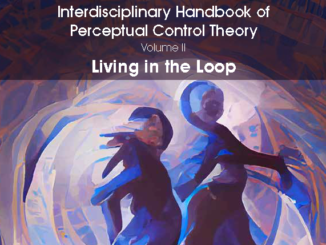Op het Interdisciplinary conference on psychedelics research (ICPR) op 24-26 september presenteert Eva de Hullu een poster over de hiërarchische controle van percepties.

Wat hebben PCT en Psychedelica met elkaar te maken? Een centraal concept in de PCT is reorganisatie, een aangeboren leerproces, dat niet te sturen is en spontaan veranderingen teweeg brengt. Succesvolle reorganisatie, en het oplossen van psychisch leed, vindt plaats onder de voorwaarde dat de aandacht op de juiste plek komt. In gewone omstandigheden komt die daar niet makkelijk. Een op de PCT gebaseerde manier van gesprekvoering, de MOL, en bepaalde psychedelica zorgen voor veranderde percepties die reorganisatie kunnen bevorderen.
Wat PCT dit onderzoek kan brengen is een verklaring waarom de ervaring onder invloed van psychedelica kan leiden tot reorganisatie. Dr. Sara Tai van de Universiteit van Manchester past deze kennis ook toe door in een groot internationaal onderzoek naar het gebruik van psylocibine bij depressie de Method of Levels te gebruiken als een methode om de ervaringen van de trip een plaats te geven (Ze merkte hier zelf over op dat de MOL op zich ook zonder paddo’s zijn werk kan doen ).
Het ICPR congres staat bekend als een wetenschappelijk vooruitstrevend en open-minded congres waarin baanbrekend onderzoek over neuropsychologie, farmacologie en psychotherapie een plaats heeft. We zijn daar graag bij.
Wie meer wil weten over psychedelica kan het boek Verruim je geest van journalist Michael Pollan (Arbeiderspers, 2018) lezen. Hij beschrijft de werking van de geest met en zonder invloed van psychedelica vanuit de Predictive Coding theorie, die op veel punten overeenkomsten heeft met PCT (maar wij vinden PCT beter).

Abstract
Perceptual Control Theory (1) is a cybernetic theory that explains behaviour as control of perception: organisms strive to bring their current perception towards their reference perception through action or change within the system. This theory helps us to understand a large range of human experiences, such as imagination, consciousness, emotion and motivation. One important aspect of this theory is the hierarchical structure of perceptual control systems in our neural architecture.
Within this hierarchy, we could make sense of both psychedelic and normal experiences. Each level in the hierarchy can be considered a different way of perceiving a set of perceptions at the level below. For example, Level 8 perceptions take the form of sequences, ordered in time or space, while level 9 combines multiple sequences in programs, where choices can be made about which sequence to follow. Perceptual experiences such as loss of the ability to make decisions, disorientation, no longer knowing what things are or how they are related, can be understood as loss of control within these levels of perceptual control. Awareness and (self-)consciousness (2) can be understood as reorganisation and change in input and output functions within this hierarchy.
In this poster, I present an overview of the perceptual hierarchy within the Perceptual Control Theory in order to understand the structure of the hierarchy of perceptual control systems, make sense of experiences related to gain and loss of control at each level, and explore the role of awareness, attention and consciousness.
- Powers, WT. Behavior: the control of perception. Benchmark Publications; 1973, 2005.
- Carey TA. Consciousness as Control and Controlled Perception–A Perspective. Ann Behav Sci. 2018;4(2):3.



